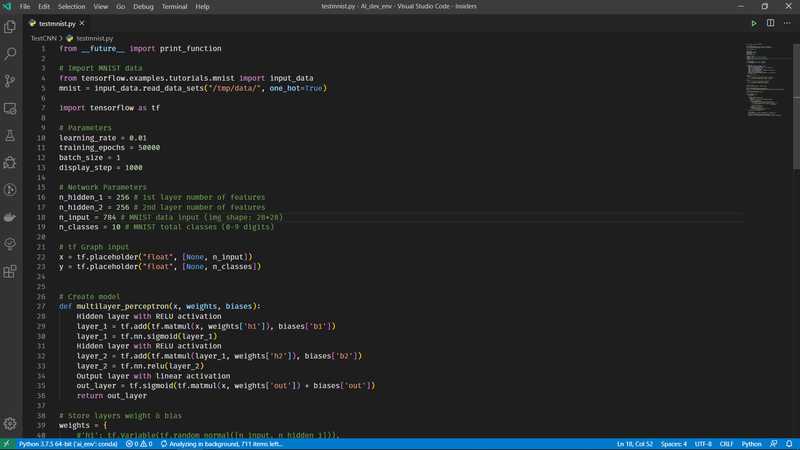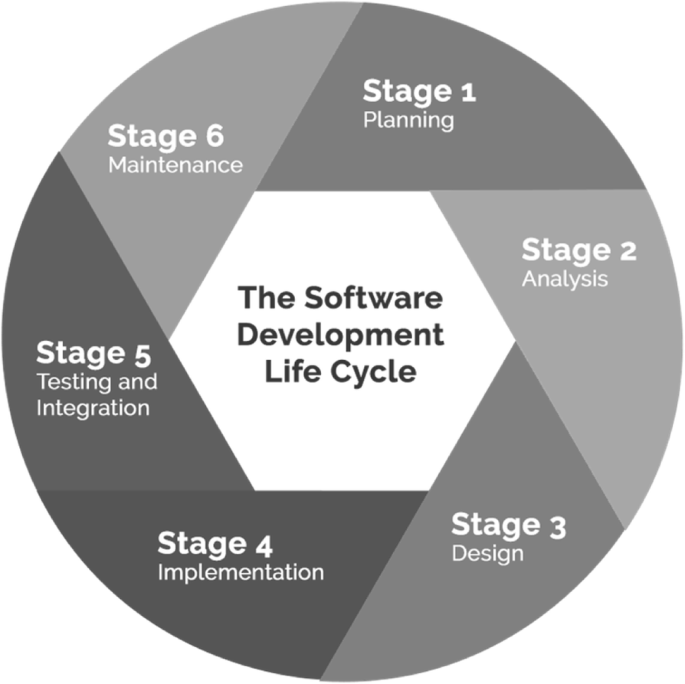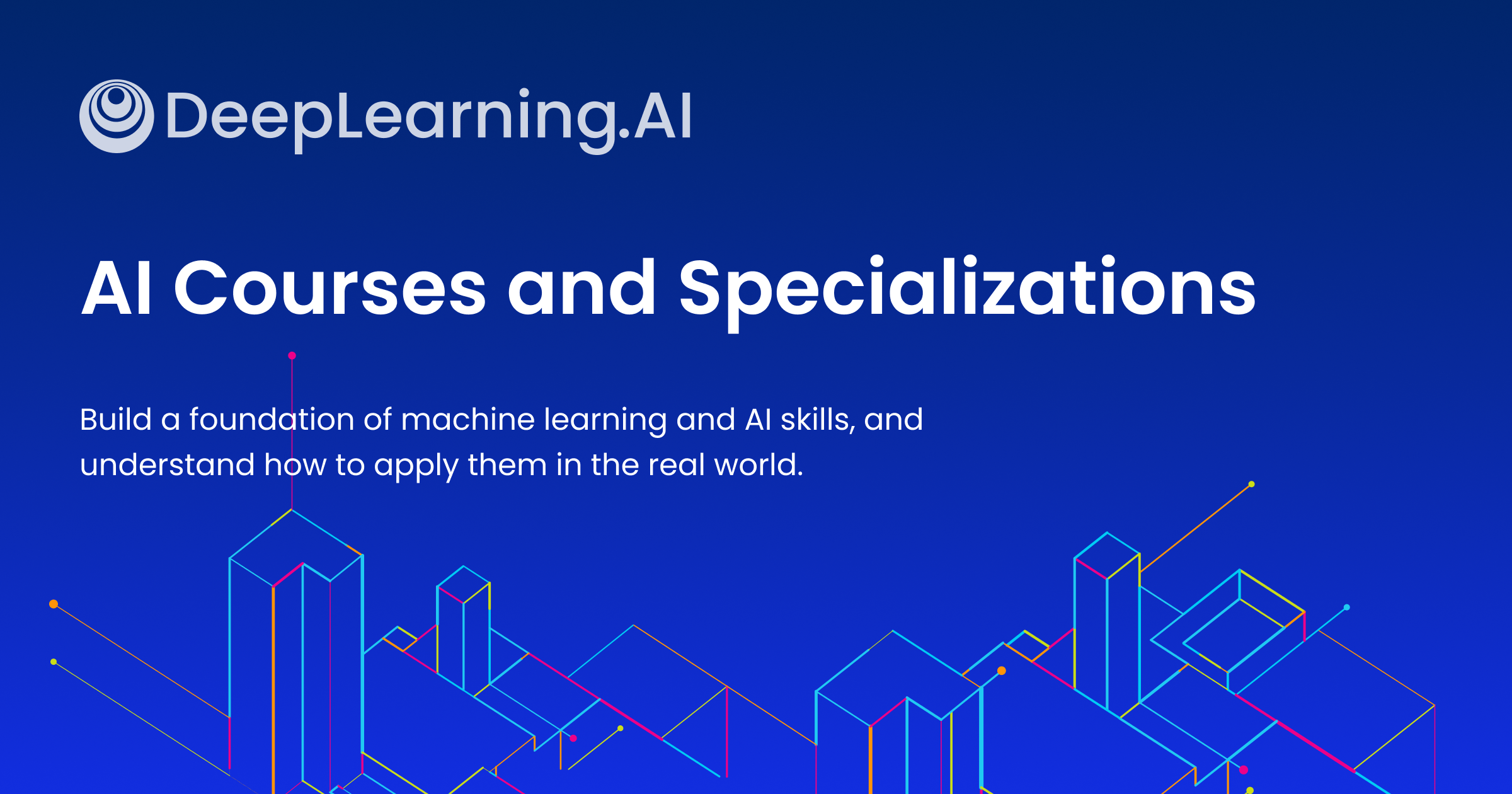All Categories
Featured
Table of Contents
- – The smart Trick of Artificial Intelligence Sof...
- – Machine Learning Course Fundamentals Explained
- – What Does How I Went From Software Developmen...
- – A Biased View of How To Become A Machine Lear...
- – Getting My Machine Learning Engineering Cour...
- – Machine Learning Engineer Full Course - Rest...
- – 10 Simple Techniques For Top Machine Learnin...
Some individuals think that that's unfaithful. Well, that's my entire occupation. If someone else did it, I'm mosting likely to utilize what that individual did. The lesson is placing that apart. I'm requiring myself to think with the possible services. It's even more regarding eating the material and trying to apply those concepts and less regarding discovering a collection that does the work or finding someone else that coded it.
Dig a little deeper in the math at the start, so I can develop that foundation. Santiago: Ultimately, lesson number seven. This is a quote. It says "You have to comprehend every information of a formula if you wish to use it." And then I state, "I think this is bullshit recommendations." I do not think that you have to understand the nuts and screws of every formula prior to you utilize it.
I've been making use of neural networks for the lengthiest time. I do have a feeling of how the slope descent functions. I can not clarify it to you today. I would certainly need to go and examine back to in fact obtain a far better instinct. That doesn't suggest that I can not resolve points making use of neural networks? (29:05) Santiago: Attempting to compel individuals to assume "Well, you're not mosting likely to achieve success unless you can explain every solitary information of just how this works." It goes back to our arranging example I think that's simply bullshit guidance.
As an engineer, I have actually functioned on many, numerous systems and I have actually utilized lots of, several things that I do not understand the nuts and bolts of how it works, despite the fact that I understand the influence that they have. That's the last lesson on that string. Alexey: The amusing point is when I think of all these libraries like Scikit-Learn the formulas they make use of inside to apply, for instance, logistic regression or another thing, are not the like the algorithms we study in maker understanding courses.
The smart Trick of Artificial Intelligence Software Development That Nobody is Discussing
Even if we attempted to learn to get all these fundamentals of machine discovering, at the end, the algorithms that these collections utilize are various. Santiago: Yeah, absolutely. I believe we need a great deal more pragmatism in the sector.

I normally speak to those that want to work in the market that want to have their effect there. I do not risk to speak concerning that because I don't recognize.
Right there outside, in the sector, materialism goes a lengthy method for certain. Santiago: There you go, yeah. Alexey: It is a great motivational speech.
Machine Learning Course Fundamentals Explained
Among things I desired to ask you. I am taking a note to chat about ending up being better at coding. Yet first, allow's cover a pair of points. (32:50) Alexey: Let's begin with core devices and frameworks that you need to learn to actually change. Let's claim I am a software application engineer.
I know Java. I know SQL. I understand how to utilize Git. I understand Bash. Perhaps I understand Docker. All these things. And I become aware of equipment knowing, it seems like an awesome point. So, what are the core devices and structures? Yes, I enjoyed this video clip and I get convinced that I don't need to get deep into mathematics.
What are the core tools and structures that I require to learn to do this? (33:10) Santiago: Yeah, definitely. Terrific inquiry. I assume, primary, you need to start learning a bit of Python. Given that you already recognize Java, I do not assume it's going to be a significant transition for you.
Not due to the fact that Python coincides as Java, yet in a week, you're gon na get a great deal of the differences there. You're gon na have the ability to make some development. That's leading. (33:47) Santiago: Then you get particular core tools that are mosting likely to be used throughout your whole career.
What Does How I Went From Software Development To Machine ... Mean?
That's a library on Pandas for data control. And Matplotlib and Seaborn and Plotly. Those 3, or one of those three, for charting and displaying graphics. You obtain SciKit Learn for the collection of maker understanding formulas. Those are devices that you're mosting likely to need to be making use of. I do not suggest just going and finding out about them out of the blue.
We can speak about certain programs later. Take one of those courses that are going to start introducing you to some problems and to some core concepts of artificial intelligence. Santiago: There is a training course in Kaggle which is an intro. I do not remember the name, however if you go to Kaggle, they have tutorials there completely free.
What's excellent about it is that the only need for you is to understand Python. They're going to provide a trouble and tell you just how to use decision trees to address that particular issue. I assume that procedure is incredibly powerful, because you go from no maker finding out history, to understanding what the issue is and why you can not resolve it with what you recognize today, which is straight software program engineering practices.
A Biased View of How To Become A Machine Learning Engineer In 2025
On the other hand, ML designers concentrate on building and releasing artificial intelligence models. They concentrate on training models with data to make predictions or automate jobs. While there is overlap, AI engineers handle even more diverse AI applications, while ML engineers have a narrower emphasis on device understanding algorithms and their sensible application.

Artificial intelligence engineers concentrate on establishing and releasing artificial intelligence versions into production systems. They work with engineering, ensuring models are scalable, effective, and integrated into applications. On the other hand, data scientists have a wider function that includes information collection, cleaning, exploration, and building models. They are frequently responsible for removing insights and making data-driven decisions.
As organizations significantly adopt AI and artificial intelligence modern technologies, the demand for knowledgeable experts grows. Artificial intelligence designers deal with cutting-edge jobs, add to technology, and have affordable wages. Nevertheless, success in this area requires constant understanding and staying up to date with progressing technologies and techniques. Artificial intelligence duties are normally well-paid, with the potential for high earning potential.
ML is fundamentally various from traditional software advancement as it concentrates on mentor computer systems to learn from data, rather than programming explicit guidelines that are carried out systematically. Unpredictability of results: You are probably made use of to writing code with predictable results, whether your feature runs once or a thousand times. In ML, nonetheless, the results are much less specific.

Pre-training and fine-tuning: Exactly how these versions are educated on vast datasets and after that fine-tuned for details jobs. Applications of LLMs: Such as message generation, belief evaluation and information search and retrieval.
Getting My Machine Learning Engineering Course For Software Engineers To Work
The ability to take care of codebases, merge adjustments, and fix disputes is simply as essential in ML development as it remains in conventional software program tasks. The skills created in debugging and screening software application applications are highly transferable. While the context may change from debugging application reasoning to identifying concerns in information processing or model training the underlying concepts of organized investigation, hypothesis testing, and repetitive improvement coincide.
Machine knowing, at its core, is greatly dependent on data and probability theory. These are critical for comprehending exactly how formulas learn from data, make predictions, and review their efficiency.
For those interested in LLMs, a complete understanding of deep discovering architectures is valuable. This consists of not only the mechanics of neural networks yet also the architecture of particular designs for various usage situations, like CNNs (Convolutional Neural Networks) for picture handling and RNNs (Persistent Neural Networks) and transformers for consecutive information and all-natural language processing.
You need to be conscious of these concerns and discover techniques for recognizing, minimizing, and interacting regarding predisposition in ML designs. This includes the possible impact of automated choices and the moral effects. Many models, especially LLMs, require significant computational resources that are often given by cloud platforms like AWS, Google Cloud, and Azure.
Structure these skills will certainly not just assist in an effective transition into ML yet additionally guarantee that developers can add successfully and properly to the development of this dynamic area. Concept is essential, yet nothing defeats hands-on experience. Start servicing projects that allow you to use what you have actually discovered in a sensible context.
Join competitors: Join platforms like Kaggle to take part in NLP competitions. Construct your tasks: Beginning with basic applications, such as a chatbot or a message summarization tool, and gradually boost complexity. The field of ML and LLMs is quickly developing, with new innovations and modern technologies emerging on a regular basis. Staying updated with the most recent study and patterns is crucial.
Machine Learning Engineer Full Course - Restackio - An Overview
Sign up with neighborhoods and forums, such as Reddit's r/MachineLearning or community Slack channels, to go over ideas and obtain suggestions. Go to workshops, meetups, and meetings to get in touch with other professionals in the area. Add to open-source projects or write blog site articles concerning your discovering journey and tasks. As you gain proficiency, begin searching for chances to include ML and LLMs into your job, or look for brand-new functions concentrated on these modern technologies.

Vectors, matrices, and their function in ML formulas. Terms like design, dataset, functions, labels, training, inference, and validation. Information collection, preprocessing techniques, version training, evaluation processes, and deployment considerations.
Choice Trees and Random Woodlands: Intuitive and interpretable models. Assistance Vector Machines: Maximum margin classification. Matching trouble types with ideal designs. Stabilizing efficiency and complexity. Basic framework of semantic networks: nerve cells, layers, activation functions. Split computation and onward proliferation. Feedforward Networks, Convolutional Neural Networks (CNNs), Reoccurring Neural Networks (RNNs). Picture recognition, series prediction, and time-series evaluation.
Constant Integration/Continuous Deployment (CI/CD) for ML process. Model monitoring, versioning, and efficiency tracking. Spotting and attending to adjustments in model performance over time.
10 Simple Techniques For Top Machine Learning Careers For 2025

Training course OverviewMachine discovering is the future for the following generation of software application specialists. This course works as an overview to device discovering for software designers. You'll be introduced to 3 of one of the most appropriate components of the AI/ML technique; overseen knowing, semantic networks, and deep discovering. You'll realize the distinctions in between conventional programs and machine learning by hands-on growth in monitored learning before constructing out complicated dispersed applications with neural networks.
This course serves as an overview to machine lear ... Show More.
Table of Contents
- – The smart Trick of Artificial Intelligence Sof...
- – Machine Learning Course Fundamentals Explained
- – What Does How I Went From Software Developmen...
- – A Biased View of How To Become A Machine Lear...
- – Getting My Machine Learning Engineering Cour...
- – Machine Learning Engineer Full Course - Rest...
- – 10 Simple Techniques For Top Machine Learnin...
Latest Posts
Software Developer (Sde) Interview & Placement Guide – How To Stand Out
Best Resources To Practice Software Engineer Interview Questions
How To Talk About Your Projects In A Software Engineer Interview
More
Latest Posts
Software Developer (Sde) Interview & Placement Guide – How To Stand Out
Best Resources To Practice Software Engineer Interview Questions
How To Talk About Your Projects In A Software Engineer Interview